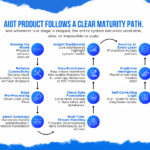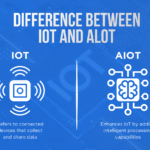Drone-Powered Field Surveillance
- Home
- portfolio
- Computer Vision Solutions
- Drone-Powered Field Surveillance
01. Flying Over Fields: Using Drones and Computer Vision to Combat Fungal Growth in Agriculture
This project leverages the power of drones and advanced computer vision techniques to monitor agricultural fields for signs of fungal growth. Drones equipped with high-definition cameras fly over crop fields, capturing real-time video footage. The collected data is then processed using sophisticated computer vision models, which analyze the images to detect early signs of fungus and other potential threats to crop health. By automating the monitoring process, this system provides farmers with timely, accurate insights, enabling them to take preventive action before the fungus spreads, ultimately improving crop yield and reducing the need for excessive pesticide use.
02. The Challenge & Solution
In this project, several challenges were encountered while developing an effective drone-based surveillance and computer vision system for field monitoring:
- Challenge: Data Quality and Accuracy The quality of the footage captured by drones can be affected by various factors, such as lighting conditions, weather, and drone stability. These issues make it difficult to consistently capture clear, high-resolution images necessary for accurate fungus detection. Solution: We implemented advanced image stabilization algorithms and optimized flight patterns to ensure steady and consistent video capture. Additionally, custom post-processing techniques were developed to enhance image quality, even under less-than-ideal environmental conditions.
- Challenge: Real-time Processing The need to process large volumes of video data in real-time, while also ensuring that the system can identify fungi in various stages and under different lighting, added significant complexity to the project. Solution: We leveraged powerful edge computing solutions and trained deep learning models specifically tailored for agricultural environments. These models were optimized to quickly detect fungal growth and deliver actionable insights without delay.
- Challenge: Variability in Crop Types Different crops can exhibit varying symptoms of fungal infections, making it challenging for the computer vision model to reliably identify fungi across a diverse range of fields. Solution: We incorporated a diverse training dataset that included images from various crop types, ensuring that the detection models could generalize across different agricultural environments. Additionally, the system was designed to learn and adapt to new fields with minimal retraining.
By addressing these challenges, the project delivers a robust solution that enhances agricultural field monitoring, providing farmers with valuable insights to protect their crops and optimize farming practices.
03. Working Process
The working process of the drone-based surveillance and field monitoring system integrates drone technology, data processing, and advanced computer vision to offer efficient fungal detection in agricultural fields. Here’s a detailed look at each step of the process:
- Drone Flight and Data Capture:
The process begins with the deployment of autonomous drones equipped with high-definition cameras and sensors. These drones are programmed to fly over the agricultural field, following specific flight paths to ensure comprehensive coverage of the area. During the flight, the drone continuously captures high-quality video footage of the crops, focusing on areas where fungal infections are likely to appear. The camera captures clear images from various angles, ensuring a thorough visual assessment of the field. - Data Transmission and Preprocessing:
After the flight, the captured footage is transmitted to a cloud-based or local processing unit for further analysis. Before the actual detection process begins, the video data undergoes a series of preprocessing steps. This includes adjusting for lighting variations (e.g., shadows or overexposure), stabilizing the footage to remove drone-induced vibrations, and enhancing image quality to ensure clarity. These preprocessing steps help create a more accurate representation of the field, improving the accuracy of subsequent analysis. The video is also segmented into individual frames, making it easier to analyze smaller sections of the footage in parallel. - Computer Vision Analysis:
The core of the system lies in the use of computer vision and machine learning models, specifically trained to detect fungal growth in crops. These models analyze each pre-processed frame to identify subtle signs of fungal infections, such as discolored patches, mold growth, or other deformities in the plants. The computer vision algorithms are designed to recognize these patterns, even in challenging conditions such as varying light, weather, or plant types. The system can differentiate between fungal infections and other crop diseases, ensuring high detection accuracy. Real-time image processing enables rapid identification of affected areas, allowing farmers to take timely actions. - Detection and Alert System:
Upon detecting fungal growth, the system highlights the affected regions in a digital field map. This map is overlaid on a detailed representation of the farm, showing the precise location of the fungal infection. Farmers are immediately alerted through a user-friendly dashboard or mobile application, which displays the map with pinpointed problem areas. This allows farmers to focus their intervention efforts on the specific zones affected by fungus, optimizing the use of resources such as pesticides, fungicides, and labor. - Continuous Learning and Model Improvement:
One of the most innovative aspects of the system is its ability to continuously improve over time. As the system processes more data from different fields, it learns from new conditions, crop varieties, and environmental factors. This feedback loop allows the computer vision models to refine their detection accuracy, ensuring the system adapts to a wide range of agricultural conditions. Additionally, the system can be updated remotely with improved algorithms or new data, making it a scalable solution for large-scale agricultural operations.
By automating the field monitoring process, this system ensures that fungal outbreaks are detected in their early stages, allowing for timely intervention and minimizing crop damage. This proactive approach not only saves costs but also reduces the environmental impact of pesticide use, promoting healthier farming practices and more sustainable agriculture.


